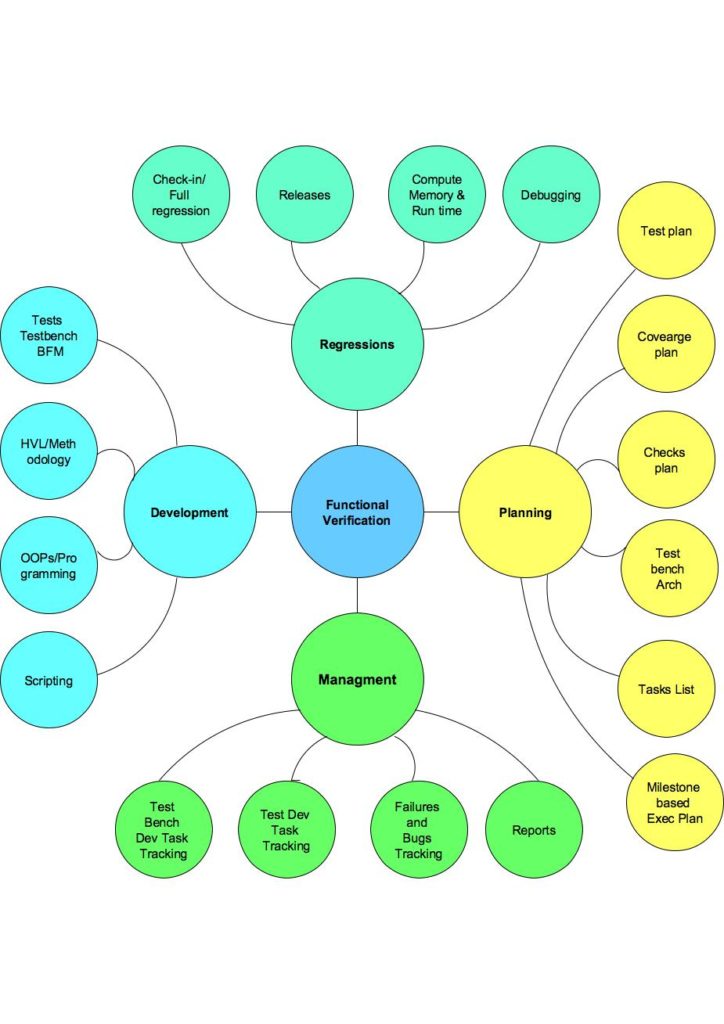Functional verification – A Bigger picture
What is Functional verification? Universal verification methodology (UVM) and System Verilog (SV) was the answer I got. Verification methodology and high-level verification language (HVL) are…
What is Functional verification?
Universal verification methodology (UVM) and System Verilog (SV) was the answer I got. Verification methodology and high-level verification language (HVL) are playing a key role but they are not the functional verification.
This is perception, especially the new engineers coming in have. Totally agree, SV and UVM have made a big impact on the productivity of the functional verification. But they are just enablers. They are means to an end but not the end itself. At times enablers get glorified so much that the final destination itself is forgotten.
This happens due to lack of visibility into bigger picture. A clean bigger picture of functional verification will make it possible to develop right sense of proportion to each part. Functional verification is much beyond verification methodology and HVL.
Following presentation is a quick tour, especially helpful for the new entrants to area of functional verification.
Agilesoc voicing similar concern much early on in UVM is not a methodology. Test and Verification‘s Mike Bartley presentation on trends in verification slide#33 says “A UVM TB can only be as good as your verification plan!”.
If verification methodology and HVL were the superpowers of functional verification then all the projects done using it should have been successful – Right? Unfortunately, many verification projects even when using the SV and UVM (also other verification methodologies as well) have failed to meet their objectives.
UVM and SV are powerful tools. But one needs to understand the bigger picture and fundamentals well to extract the maximum performance from HVL and verification methodologies.
Please notes it not a campaign against HVL and verification methodologies. It’s an attempt to put them in the right perspective. Provide them the place they deserve in the bigger picture of the functional verification.
One simplified view of the big picture of the functional verification is following.

Functional verification is made up four major activities. Planning, Development, Regression and Management. First three activities planning, development and regression are phases of the verification project. These phases do not end completely but major focus shifts from phase to phase during the course of the project. Functional verification starts off with the planning phase. There on for every milestone is executed as combination of development phase and regression phase. Fourth activity is managing the three phases for high quality and productivity.
Planning phase is mainly putting in together the verification plan consisting of test plan, checks plan and coverage plan. Using the verification plan to define the test bench architecture. Using both of the build detailed tasks lists and milestones to prepare for the development.
Development phase is about the execution of the tasks lists created during the planning phase. Development phase consists of building test bench, bus functional models, writing tests, coding functional coverage and getting the sanity tests passing. This where the HVL and Verification methodologies play a dominant role. But note that his just one of three activities.
Regression phase is the climax of the verification. Regression phase is mainly getting all the tests and test variants passing. Filing the bugs and validating the fixes. Achieving the desired the desired passing rate and convergence on the coverage.
Managing each of these phases has its own challenges. There are six parameters identified for ensuring quality and productivity. They are Clarity, People, Metrics, Tracking, Review and Closure.Each of these six parameters manifest differently in each of these phases.
Anything more to add?